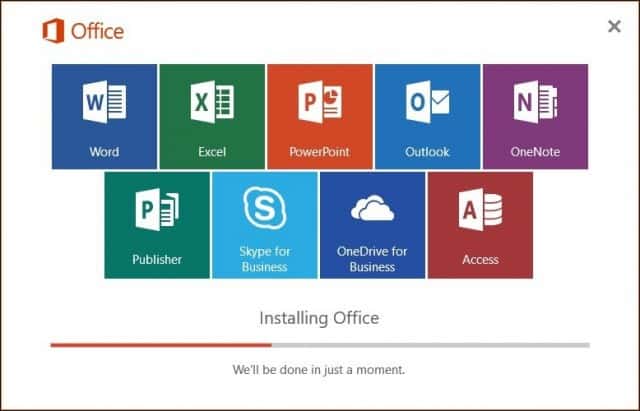The company is not ending the development of perpetual versions of the suite, but users will need to move to the latest versions in order to access all of Microsoft’s Office 365 cloud services. For example, Office 2016 which was launched in September 2015 will have its mainstream support end in 2020. So, if you don’t cut over to a Microsoft Office subscription by then, it will no longer be supported to connect to Microsoft’s cloud services.
Microsoft Winding Down Support for Perpetual Versions of Office
One of the key benefits of Office 365 versus Office 2016 is the ongoing delivery of new features and functionality. Office 2016 Professional Plus has pretty much stood still since its 2015 release, receiving only security updates. Office 365, on the other hand, has received numerous improvements and features such as improved collaboration, business intelligence enhancements in Excel, and Motion Path in PowerPoint. For many users, the standalone suite remains attractive, especially for organizations that need control over access to features in the suite. Here is what Microsoft’s Ron Markezich had to say about the changes ahead.
Microsoft Quotes
Office 365 ProPlus or Office perpetual in mainstream support required to connect to Office 365 services. Starting October 13, 2020, Office 365 ProPlus or Office perpetual in mainstream support will be required to connect to Office 365 services. Office 365 ProPlus will deliver the best experience, but for customers who aren’t ready to move to the cloud by 2020, we will also support connections from Office perpetual in mainstream support.Applies to Office 365 commercial services only. This update does not change our system requirements or support policies for the Office perpetual clients, Office perpetual clients connecting to on-premises servers, or any consumer services.More than three years’ notice. We’re providing more than three years’ notice to give IT time to plan and budget for this change. Until this new requirement goes into effect in 2020, Office 2010, Office 2013 and Office 2016 perpetual clients will still be able to connect to Office 365 services. Source
Summing Up
Users can read further details about the changes at the company’s Tech Community website. Microsoft is slowly nudging users to move to Office 365, which actually offers greater value in the long run by being cheaper upfront, plus it’s continually updated with new features and flexible deployment options. Three years is ample notice, especially for versions such as Office 2010, which would have been expected to stop receiving support by 2020. The dream of Office as service goes back as far as Office 2003 when Microsoft had originally planned to offer its suite as a subscription, but the market wasn’t ready. Office 365, first launched in 2011 has evolved over the years to become a consistent revenue generator for the software firm. The rest of the industry has followed suit, brands such as AutoDesk, Adobe, and Intuit have also moved their business models to subscriptions. Charles. I do not use or need anything else and do not fully use all options in these 4, as I am just barely a basic user. Persons like me do not need all the bells and whistles so keep the basic standalone OFFICE for beginners and basic users like me. It also looks like you must connect with some cloud service whenever you connect to the subscription version to make sure you are authorized. How does this work if you are off-line? (Don’t really care though). For those who do care, Office will check in with the MotherShip (its acquaintances call it MS) periodically. If it can’t connect for 30 days or a bit more, it will go into reduced functionality mode … you can view but not edit files. As long as you let it talk to mama once a month, you don’t need to be online to use it (though of course you won’t be able to use some of the online-only features if you’re not connected … some of them are, IMO, pretty dispensable, some are very interesting). I then bought Office 2016 Professional for $100.00 via a website and use it daily to this day. If I had bought Office 365 in 2015 instead of the stand alone version I would have spent from then to today $238.90. I have more than doubled my money savings. Some time around 2020 I’ll upgrade to whatever is available then but I sure a shiz will not pay a monthly price for it. It’s not the $$’s reason that folks don’t want Office365… Most don’t need it, irrelevant what M$ claims, The product was ruined with the ribbons, & the updates are always security broken out of the box & re-riddles with bugs… Any advance use of the applications requires returning to Office 2003 to get advanced functions to work correctly & easier. I still curse Office 365 every time I really need to use the applications for any productive purposes. M$ needs to be busted up, the M$ monopoly has resulted in a bulled market that reduced the customer’s choices & benefits… Just like ALL monopolies the result is always the same… We always seem to return to the environment of too big to succeed. Comment Name * Email *
Δ Save my name and email and send me emails as new comments are made to this post.
![]()


